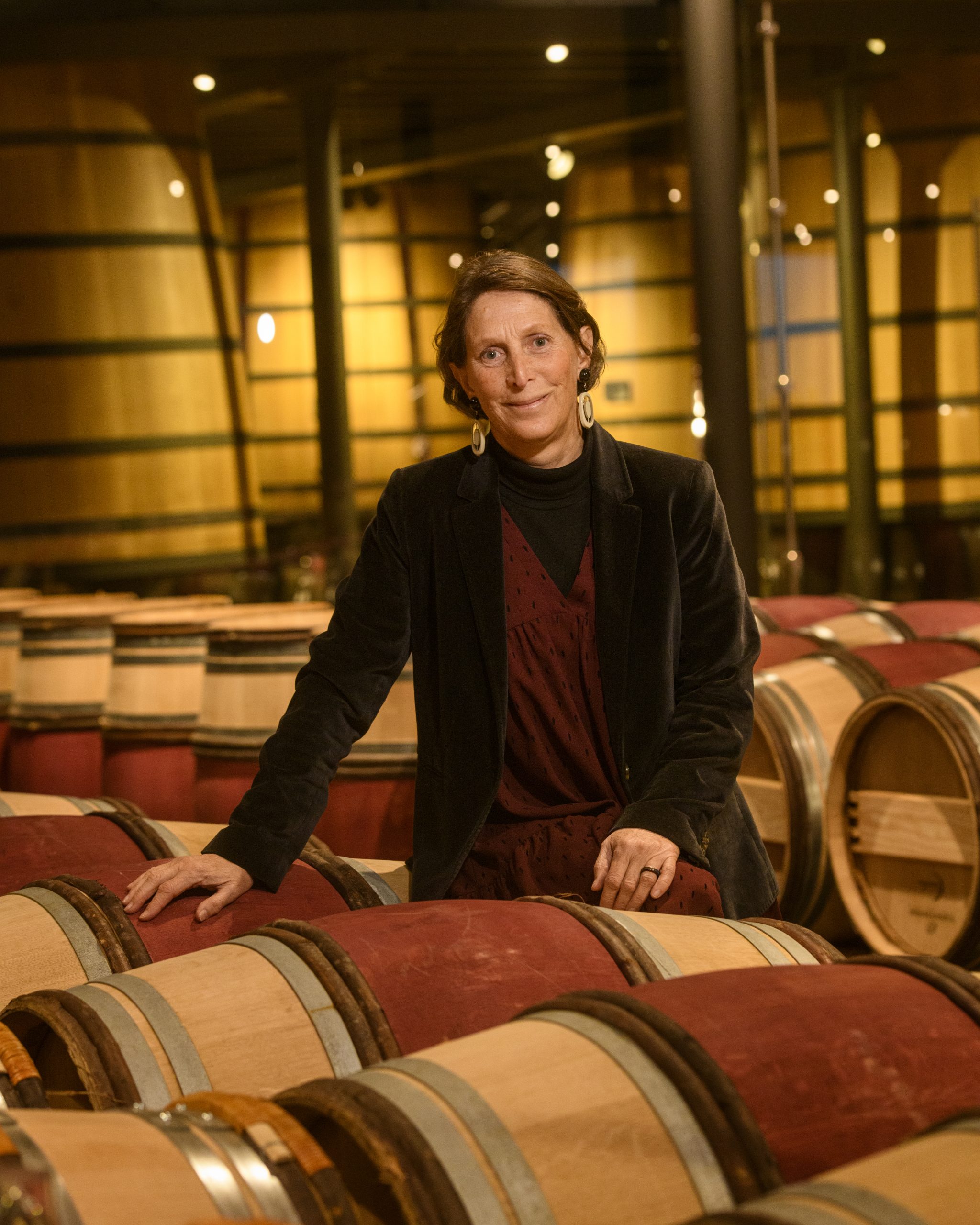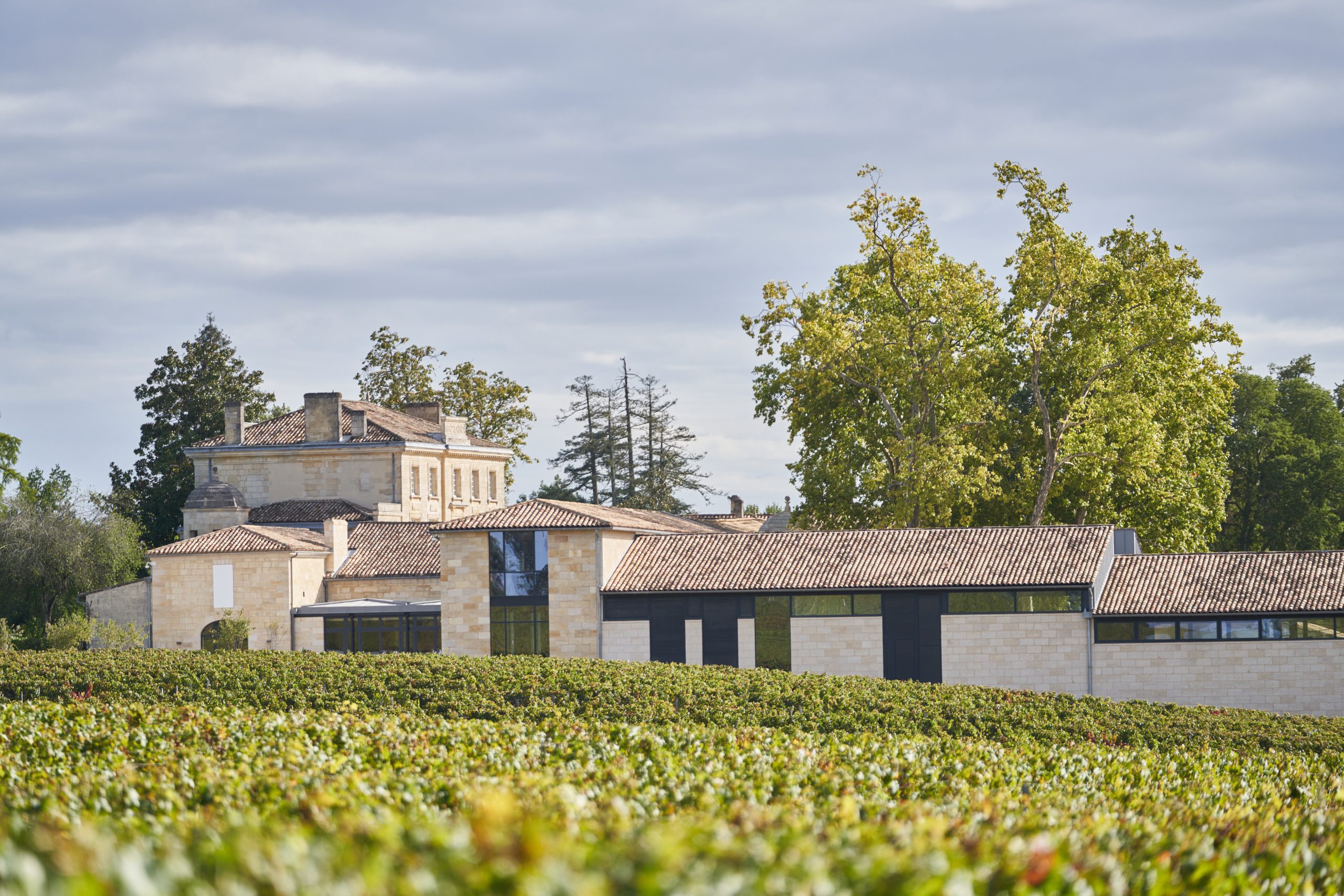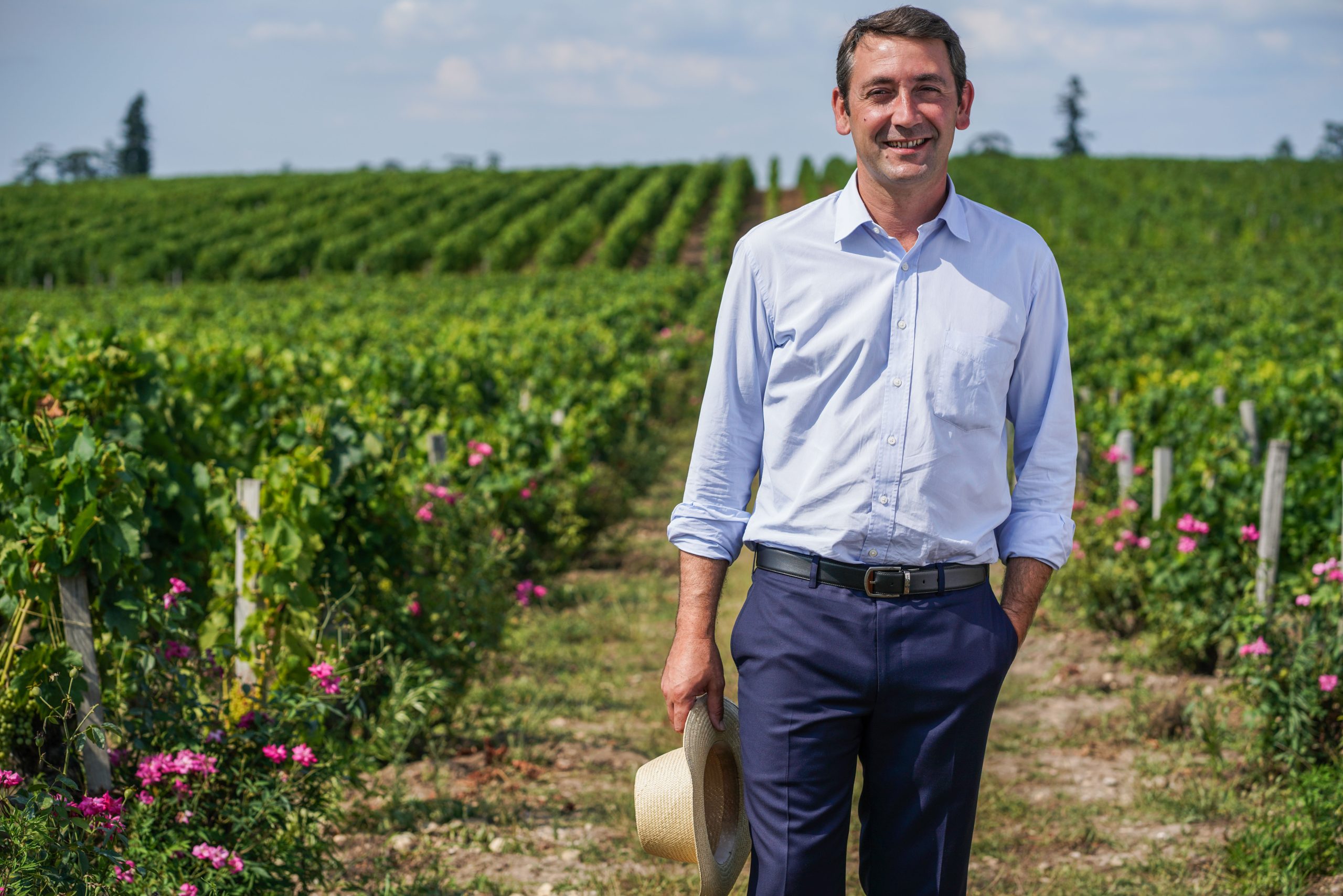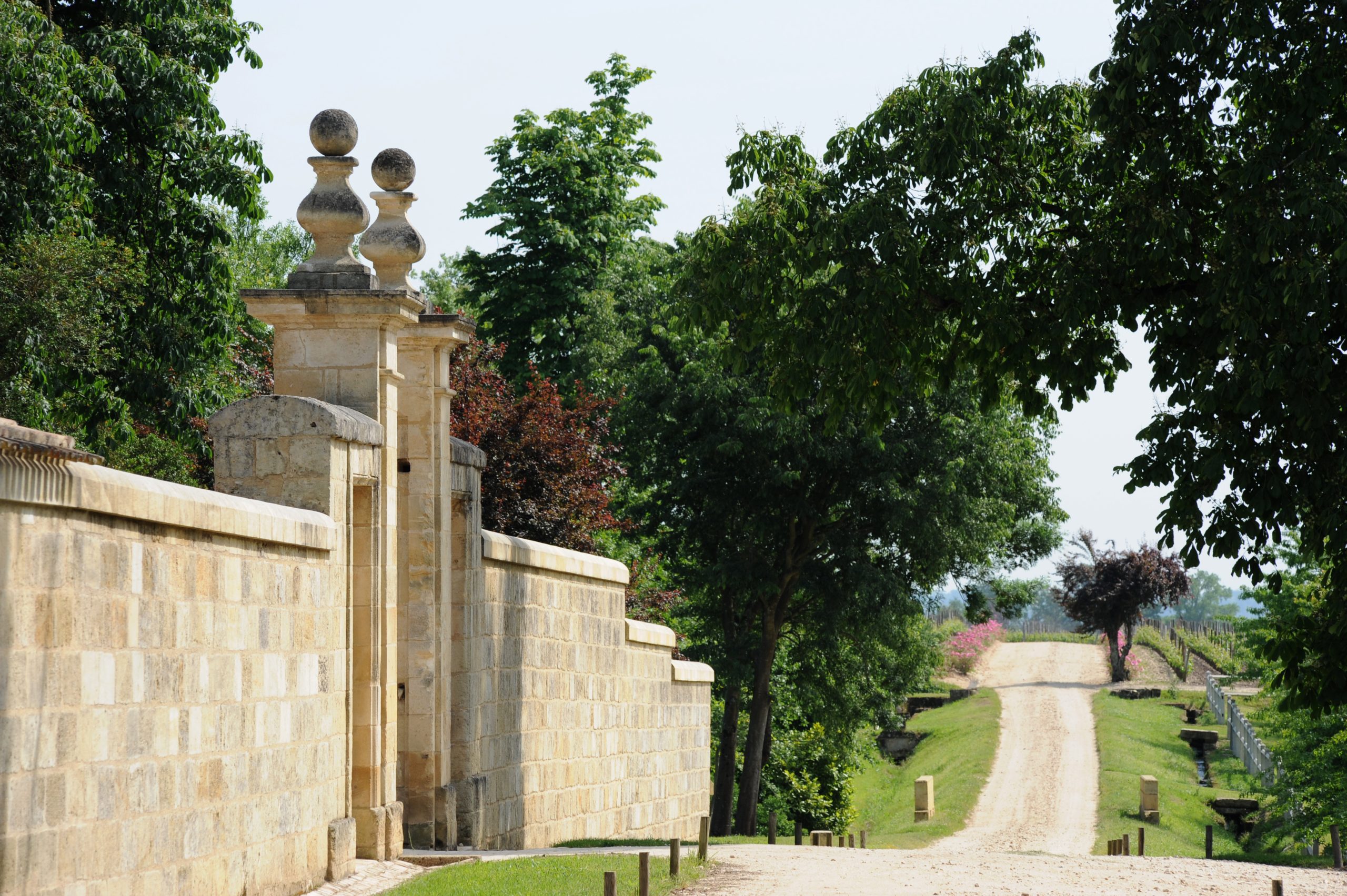This website uses cookies so that we can provide you with the best user experience possible. Cookie information is stored in your browser and performs functions such as recognising you when you return to our website and helping our team to understand which sections of the website you find most interesting and useful.
Château Figeac: ‘our fundamental modus operandi is constant improvement and renewal’
Following Saint-Emilion’s Château Figeac’s promotion to Premier Grand Cru Classé A, our Bordeaux correspondent Colin Hay talked to Blandine de Brier Manoncourt and Frédéric Faye about the appellation, the classification and Figeac’s place within it.

The promotion of Château Figeac to Premier Grand Cru Classé A, which was announced in September 2022, came as a surprise to no-one. It has been a long time coming and is richly merited, but that is in the nature of the St-Emilion classification. Properties that are uplifted – above all to Premier Grand Cru Classé A (1GCCA) – are promoted a full classificatory cycle after most commentators think they warrant it, because most commentators base their evaluations on the tasting room, which inevitably privileges the most recent vintages.
As Blandine de Brier Manoncourt, general secretary and co-owner of the famed Bordeaux estate, points out, the ascent is both recognition for the château’s very specific terroir, and “a reward for the long-term vision and work”. Promotion is not, she argues, “a simple reward for the quality of a handful of recent vintages”, as is sometimes assumed. A property’s performance is gauged over a full 15-year period – and with a three-vintage time lag – which makes sense for the classification to remain authoritative.
The reclassification was based on a tasting of vintages from 2005 to 2019, supported by a slew of information covering all aspects of the estate’s activity, from vine-growing methods to pricing and commercial data, environmental measures and R&D. But the very effort and wait is what made it all the more rewarding for the family and the team at Figeac, de Brier Manoncourt explains.
“We have patiently waited, striving always to improve what we do, and we are now recognised for that collective achievement,” she smiles. “And it has been fabulous and heart-warming to receive so many messages of goodwill, congratulations and support.”
While no doubt a great honour – Figeac and Pavie are now the only two châteaux in the top tier of the classification – de Brier Manoncourt and Figeac’s managing director, Frédéric Faye, are careful to sidestep the controversy over the classification in recent years. This saw three of the original Premier Grand Cru Classé A properties (Ausone and Cheval Blanc, followed by Angélus) withdraw entirely from the classification between August 2021 and January 2022 over a philosophical difference about the criteria of the classification, amid criticism that it was “drift[ing] towards marketing”.
The withdrawals could hardly have been met with enthusiasm at Figeac, but while “it is regretful” not to be sitting alongside those great châteaux, “it is not really our concern”, Faye insists. He also tactfully refuses to speculate on whether the three châteaux would have withdrawn, had Figeac been promoted in 2012, calling it “an interesting – if perhaps theoretical – question” and says: “We respect, as we always have, the choices of others and we have great respect for all three of these former 1GCCAs. They have made their choice, and they have their own reasons – just as we made our choice to submit a dossier for promotion to 1GCCA. We are delighted by the outcome – it is as simple as that.”
For many observers, the question of Figeac’s promotion had become the litmus test of the credibility of a competitive system of classification for St-Emilion that has never been uncontroversial. But de Brier Manoncourt has faith that the St-Emilion classification – and competitive classifications more generally – “absolutely” have a future, and one that needs to be “nurtured and supported”.
“It is our collective responsibility to make sure that it works and is seen to work,” she nods. “We see the classification as an opportunity for the appellation, as a booster for improvements, available for all St-Emilion teams and families, and for the consumers who are seeking guidance.
“A competitive system of classification is never easy to put in place, and a certain amount of controversy is inevitable. But we are heartened that the new classification has been well-received. That should give us all optimism for its future.”
When I visit Figeac, it is clear that the property has been enthused and energised by the reclassification, but otherwise unchanged by it. As pleasing as it may be, the team are tirelessly and very simply focused on the daily tasks of trying to ensure that the best vintage is the next one. As such, the classification is simply a step forward, rather than the end goal of the estate, “an invitation to continue to work as we always have – with calm determination and dynamism”, de Brier Manoncourt explains.
The long-term vision remains “an unwavering commitment to express the singular quality of the palette of terroirs that comprise the vineyards at Figeac”.
New Winery

This commitment has just taken tangible form with a new £15 million winery, completed in 2021, which has given the team more space, more adapted technology and better tools to use.
The principal factors motivating the massive investment were “space, precision and excellence, in order to express the complexity of our terroir with purity,” de Brier Manoncourt explains.
“The project was based on the winemaking process and the vision of what we needed to work even better, serving Château Figeac’s terroir. Then came the design.”
The last 10 years has seen huge progress in terms of greater precision in the estate’s viticultural work, and the team “wanted to reach the same precision and excellence in the winemaking process as in the viticulture”, Faye explains. The facilities are now three times bigger, and “perfectly equipped for Figeac’s specific needs – precise and very practical”.
The new winery sits on top of the vineyard’s hill “like a ship, half-visible and half-concealed, vast below ground but deliberately discreet on the surface”, he adds, in order to better integrate into its “beloved landscape”.
Designed by Bordeaux architect A3A, it has been sensitively envisaged, with its 5,000sq m surface area comprising two underground levels, which gives it a Tardis-like presence – massive internally and yet seamlessly integrated into the château buildings and the vineyard from the outside. It feels so timeless that it is as if it has always been there, blending elegantly into the landscape, but the underground design means the processes are also entirely gravity-fed and more efficient in terms of energy consumption and respect for the environment.
The new vat room is as much a technical triumph as an architectural model – eight PEFC-certified French oak vats, placed in a circle at the heart of the vat room, are complemented by 40 truncated-cone stainless steel vats designed for plot and intra-plot vinifications. These boost the number of separately vinified lots from which the grand vin is assembled by around 40%, allowing the team to work with more precision to express the complexity of Figeac’s fabulous terroir.
“These 48 vats, all custom-made, help to achieve a more nuanced terroir expression: the flavour palette becomes ever purer and more precise, and the wine gains complexity,” Faye explains. “For example, we can vinify each parcel or even intra-parcel separately, adapt our choices to each precise case. As a visible result, for the blending we have 40% more nuance in our palette, and therefore our wines gain in complexity.” There is also a vast, well-lit tasting room with dramatic views of both the cellar and the vines, and two salons designed for hosting guests at the estate.
Continual renewal

You’d think that the team would give itself a pause after this massive investment, but there’s no sign of that. There are “at least 10 experiments at any given point in the year”, de Brier Manoncourt notes, covering everything from the supply chain to vineyard health, from vinification to barrel selection and environmental impact, including an important study of carbon emissions across the entire property.
“Our fundamental modus operandi is constant improvement and renewal, so in that way, Figeac always has new projects, each aimed at preserving what is special about our wines while also moving forward,” she says. For example, replanting the vineyards is “a continual process” to maintain the health, quality and unique identity of the vines. More than one-third of the vineyard has been replanted over the last decade, with most recent replanting informed by a fully comprehensive study of soil, climate and vegetation at the micro-parcel level, conducted by a team from l’Université de Dijon in 2018. One the major projects at this time was putting a massal selection parcel, called ‘La Collection’, in place.
“This veritable library allows us to replant using the localised, diverse genetic material across all three grape varieties in our vineyard,” de Brier Manoncourt explains. “This is particularly important in our larger preparations for a changing climate.”
Cultivation methods

While climate change is a pressing issue, the vineyard team has become more flexible in its cultivation methods, which stood it in good stead for the challenges of 2022. It was a “climatically unprecedented” vintage, Faye points out, due to the early and long-lasting heat and drought across Bordeaux. To overcome the challenges, both the vines and the team had to adapt, drawing deeply on the experience acquired during recent hot vintages, as well as its “systemic and deeply rooted agro-ecological approach”.
“For example, in order to limit the evapotranspiration of the vine and the evaporation of water from the soil, we employed various tools and methods: inter-row plant cover, harvest at dawn to benefit from the coolest temperatures, minimal soil work, no leaf removal and limited topping,” Faye points out.
Luckily, Figeac has natural assets that allow it to overcome extreme weather conditions, he adds. “Vines are deeply rooted in the blue clay subsoil, which preserves moisture deep underground. Islands of coolness are created by the woods, hedges, ponds and streams found throughout the 13 hectares of the estate not planted with vines,” Faye explains.
And that brings us full-circle to the underlying reason for the château’s success: Figeac’s famously complex terroir, a patchwork of plots grouped around three Gunzian-era gravel outcrops of flint and quartz over a blue clay subsoil which, when combined with the diversity of the micro-climates, provides the perfect terroir for Cabernet Franc, Cabernet Sauvignon and Merlot.
It is this unique quality that, above all, gives de Brier Manoncourt the faith to profess that Figeac will “continue to exceed expectations and ensure the future of the estate for generations to come”. db
Interview by Colin Hay, edited by Arabella Mileham

